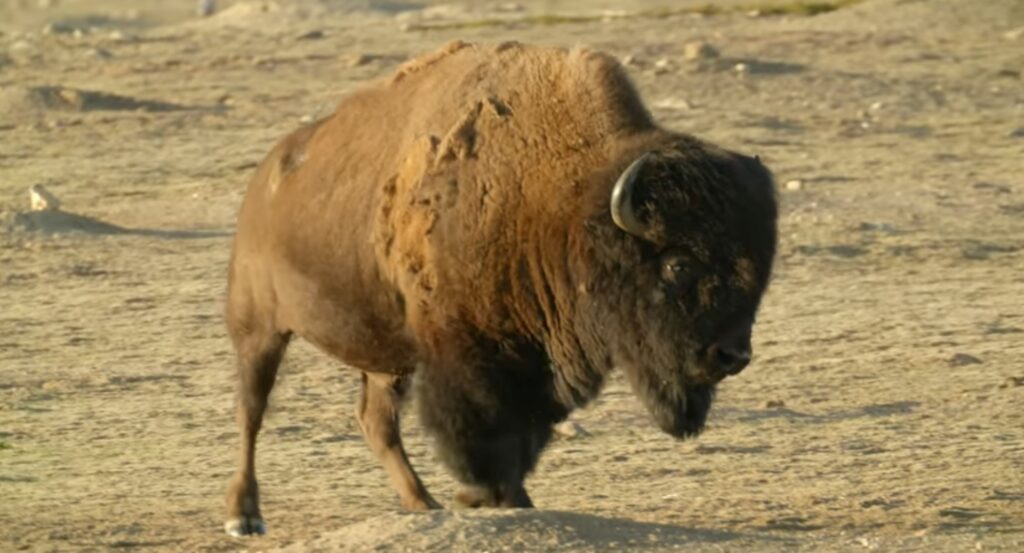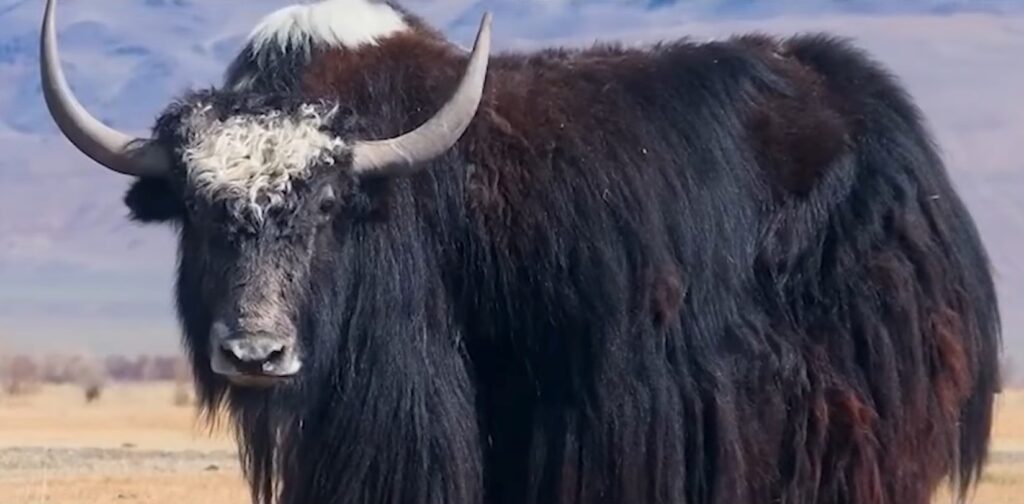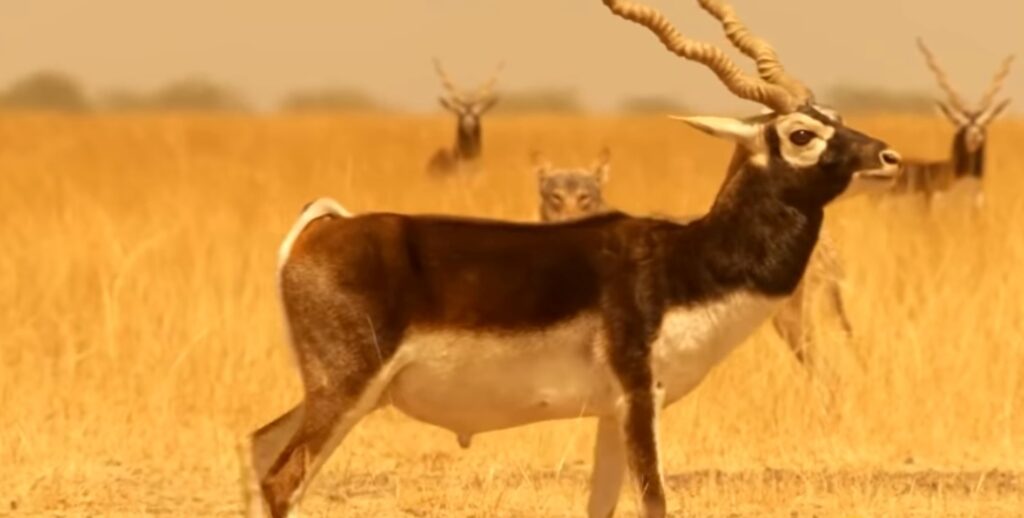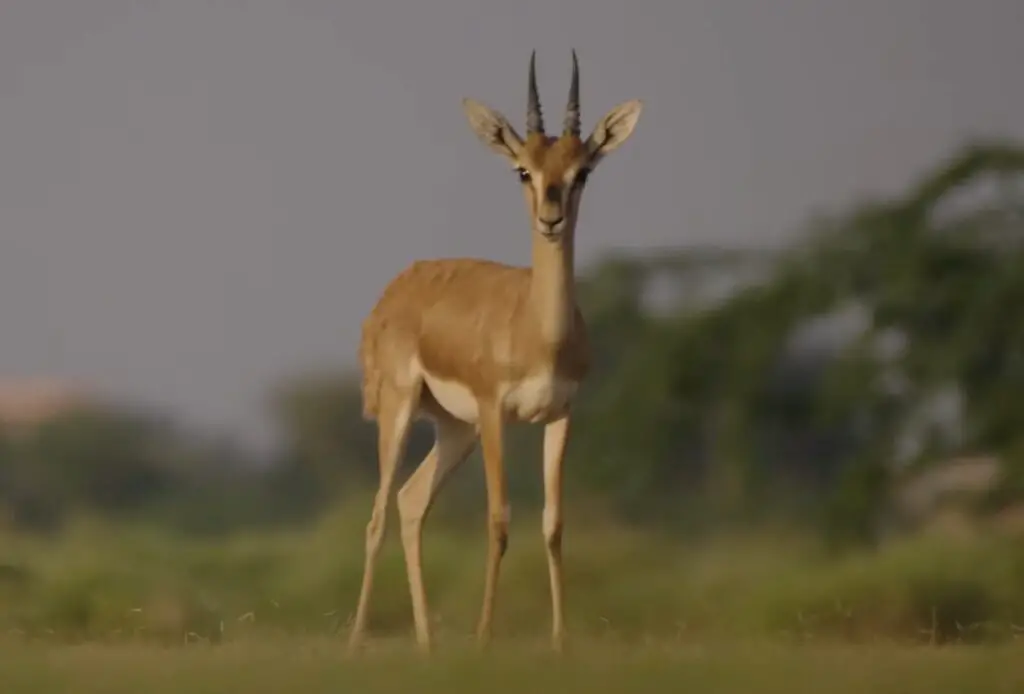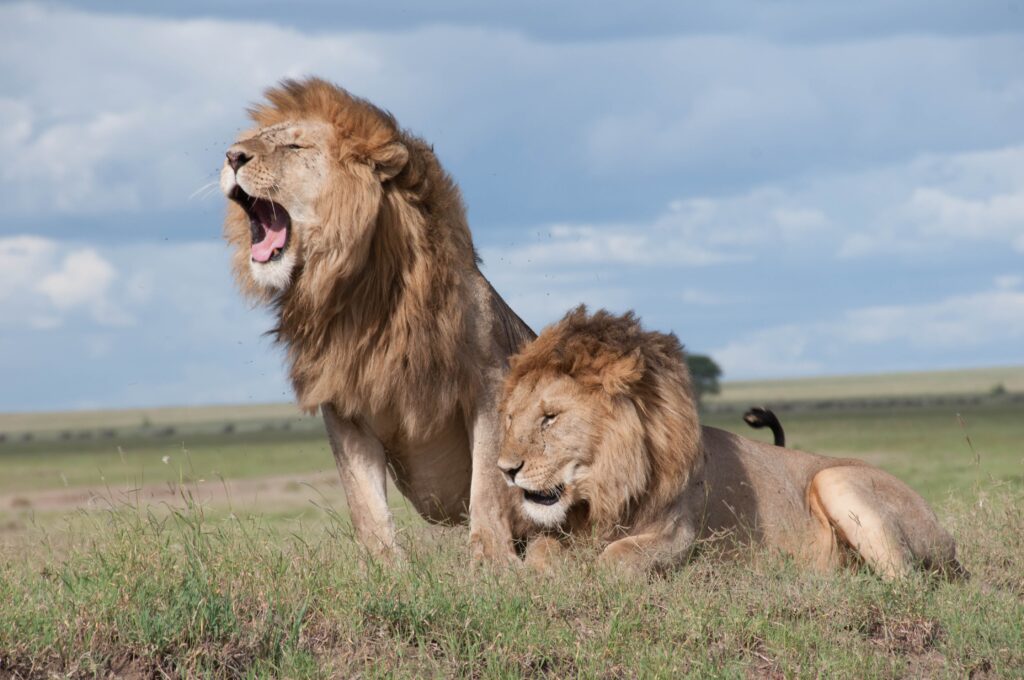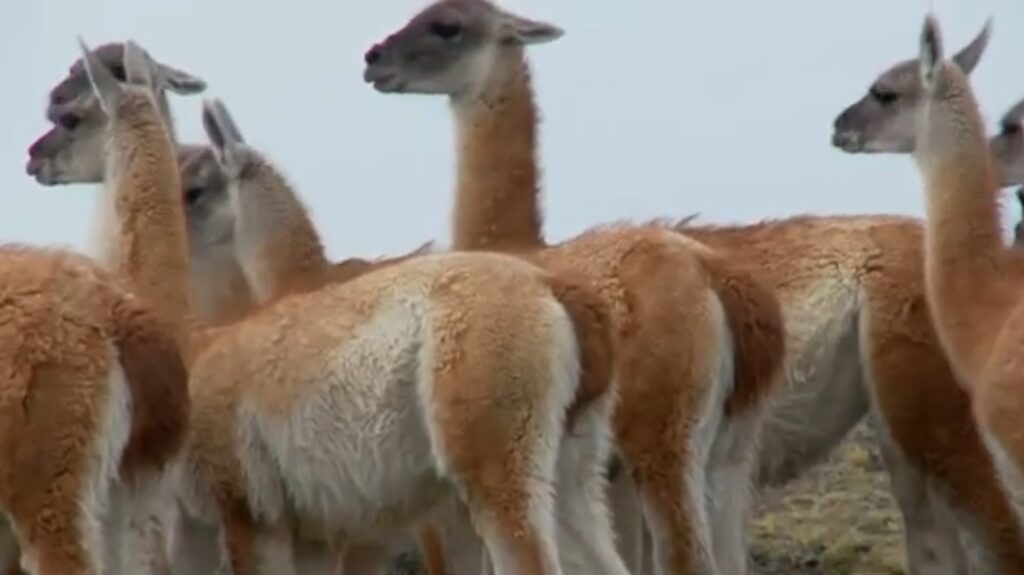Bison, also known as buffalo, are large, herbivorous mammals that are native to North America. They are one of the most iconic and recognizable animals on the continent, with a distinctive hump on their shoulders, shaggy fur, and massive horns.
Historically, they were an important part of many Native American cultures, providing food, clothing, and other essential resources. They were also an important food source for early European settlers and played a key role in the development of the American West.
Today, this animal is still an important part of the North American landscape, and efforts are underway to protect and conserve their populations. Here are some interesting facts about bison:
Bison Size & Weight
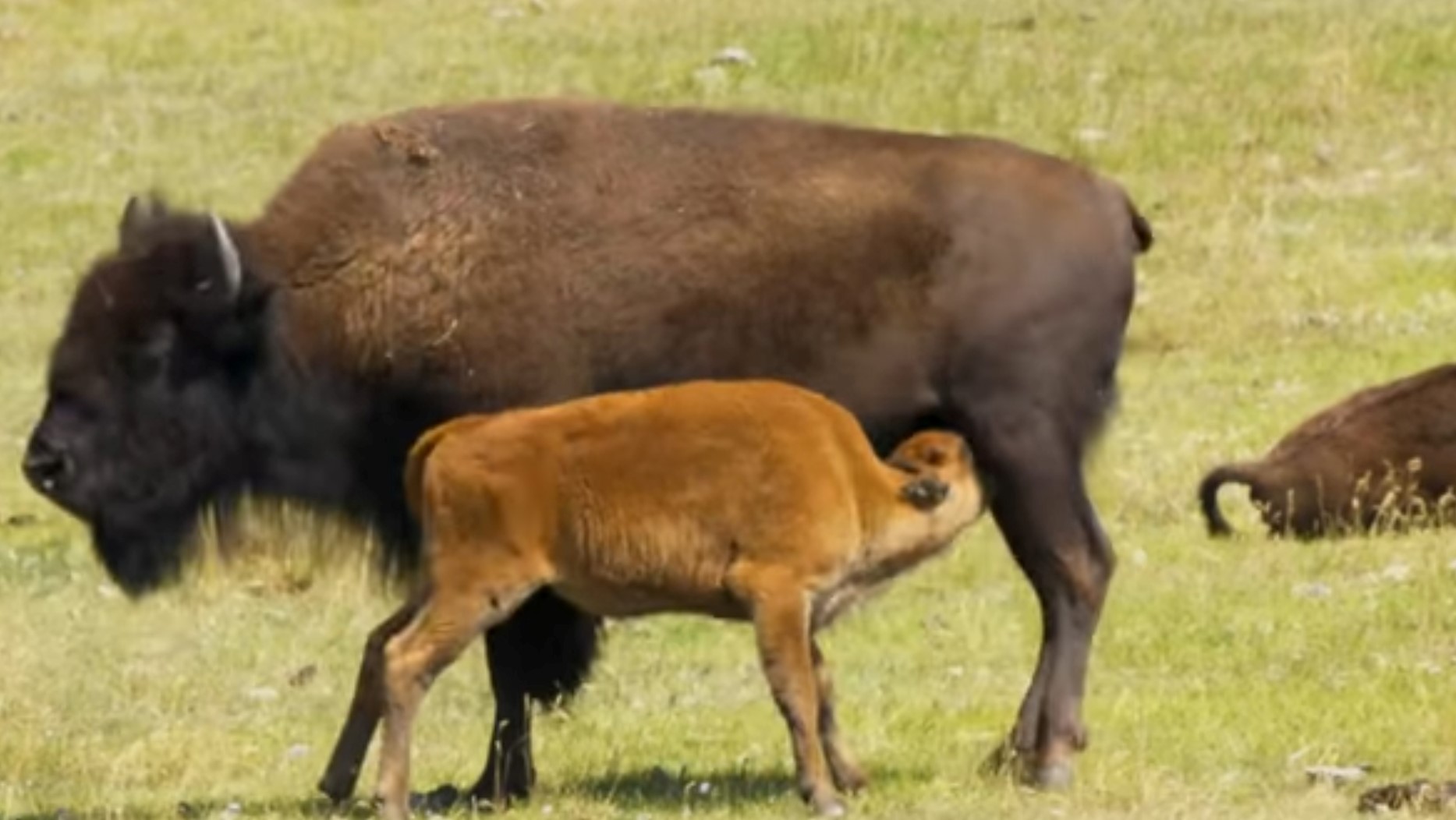 Bison are the largest land animal in North America.
Bison are the largest land animal in North America.
Adult animal can weigh up to 2,000 pounds and stand over 6 feet tall at the shoulder. They are second in size only to the African elephant.
- Bison has a distinctive hump on their shoulders.
This hump is made up of muscle and helps to support the animal’s massive head and neck.
- They have a thick, shaggy coat of fur.
This coat helps to keep them warm in the cold winters of the North American plains. The fur is also used for making clothing and blankets.
- They are herbivores.
They feed on a variety of grasses and other vegetation, and can consume up to 50 pounds of food per day.
- Bison once roamed North America in massive herds.
At one time, it is estimated that there were up to 30 million bison on the continent. However, hunting and habitat loss caused their populations to decline sharply in the 19th and early 20th centuries.
- Bison are now considered a conservation success story.
Efforts to protect and conserve their populations have been successful in recent years, and their numbers have rebounded to around 500,000 in North America.
- Theyplay an important role in grassland ecosystems.
Their grazing behavior helps to maintain healthy grasslands, which in turn support a diverse array of plant and animal species.
Bison vs Buffalo
 Bison, buffalo and Yaks are totally distinct and often confused large mammals, mainly due to their similar appearance and habitats. However, they belong to different taxonomic groups and are found on different continents. Let’s delve into the differences between the three:
Bison, buffalo and Yaks are totally distinct and often confused large mammals, mainly due to their similar appearance and habitats. However, they belong to different taxonomic groups and are found on different continents. Let’s delve into the differences between the three:
Bison:
- Scientific Classification: They are scientifically classified as members of the genus Bison. There are two primary species of bison: the American bison and the European bison (Bison bonasus), also known as the wisent.
- Habitat: American bison are primarily found in North America, historically ranging across the grasslands and prairies of the continent. European bison inhabit parts of Europe’s dense forests.
- Physical Characteristics: They have a distinctive hump on their shoulders, a large head with a shaggy mane of fur, and a beard-like growth on their throat. They also have shorter, curvier horns.
- Social Structure: They are known to form small family groups or herds. They exhibit migratory behavior, moving in search of food and water with the changing seasons.
- Conservation Status: The American bison, while once on the brink of extinction due to overhunting and habitat loss, has made a significant recovery through conservation efforts. European bison, on the other hand, have also faced threats but have been reintroduced in some regions.
Buffalo:
- Scientific Classification: Buffalo, on the other hand, belong to the Bovinae subfamily and are part of the larger Bovidae family. The two main types of buffalo are the African buffalo (Syncerus caffer) and the water buffalo (Bubalus bubalis).
- Habitat: African buffalo inhabit various habitats across sub-Saharan Africa, including grasslands, woodlands, and savannas. Water buffalo are native to parts of Asia, including South Asia and Southeast Asia.
- Physical Characteristics: Buffalo tend to have larger, stockier bodies with a distinctive shoulder hump. Their horns are usually longer and more curved than those of bison. African buffalo are known for their unpredictable and sometimes aggressive behavior.
- Social Structure: African buffalo are often found in large herds that can number in the hundreds or even thousands. Water buffalo can also form groups, though their social behavior can vary.
- Domestication: Water buffalo have been domesticated in many parts of Asia, where they are used for various purposes, including agricultural work and milk production.
Yak:
- Scientific Classification: Yaks (Bos grunniens) are large bovids belonging to the genus Bos. They are native to the Himalayan region of Central Asia.
- Habitat: Yaks are adapted to high-altitude environments and are commonly found in the Himalayas, Tibetan Plateau, and other mountainous regions of Central Asia.
- Physical Characteristics: Yaks have a sturdy build with long, shaggy hair that helps them withstand cold temperatures. They have a distinctive hump over their shoulders, similar to bison and buffalo. Yaks also have long, curved horns.
- Use and Importance: Yaks are highly valued by the people of the Himalayan region for their milk, meat, wool, and even as pack animals. They are well-suited for life in high altitudes and are often used to transport goods and people across difficult terrains.
- Social Structure: Yaks are known to form herds, usually led by a dominant female. They exhibit social behaviors that help them survive in their challenging environment.
- Conservation Status: While not as endangered as some other species, wild yaks are vulnerable due to habitat loss and fragmentation. Domestic yaks, which are more numerous, play a significant role in the livelihoods of local communities.
In summary, yaks are well-adapted to high-altitude environments and are valued for their contributions to the livelihoods of people living in mountainous regions. Like bison and buffalo, yaks have a hump over their shoulders, but they inhabit different geographic areas and have unique characteristics and uses.
In conclusion, bison are an iconic and important part of the North American landscape. While their populations were once decimated by hunting and habitat loss, efforts are now underway to protect and conserve these magnificent animals for future generations. Their massive size, distinctive appearance, and important ecological role make them a true symbol of the American West.

